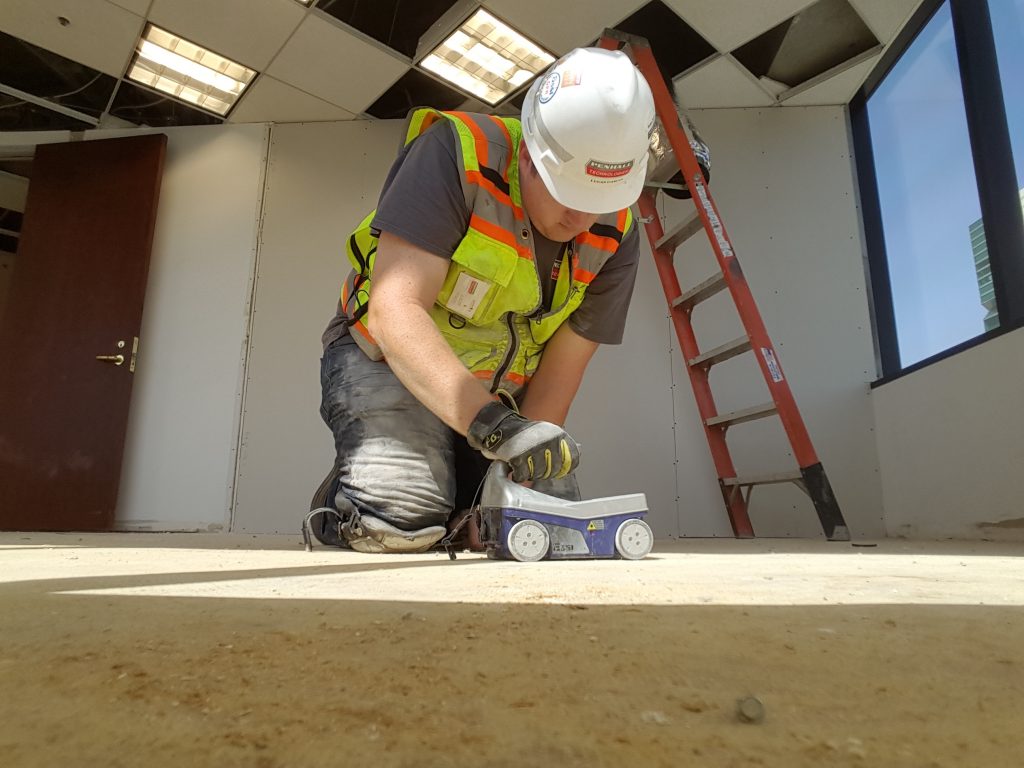GPR Concrete Scanning Bellevue: Precision and Accuracy
Concrete Scanning: Your Shield Versus Unforeseen Obstacles in Construction Projects
By taking advantage of the power of advanced scanning methods, building and construction experts can proactively determine covert hazards below the surface, ensuring a smoother and extra effective project distribution. As we discover the relevance of concrete scanning as a protective shield versus unpredicted barriers in building jobs, a deeper understanding of its advantages and applications arises, dropping light on the transformative effect it can have on the industry as a whole.
Relevance of Concrete Scanning
Concrete scanning plays a crucial function in making sure the safety and security and stability of building and construction jobs. By making use of sophisticated modern technologies such as ground-penetrating radar (GPR) and electromagnetic induction, building and construction teams can precisely locate rebar, post-tension cable televisions, avenues, and other prospective blockages within concrete structures. This procedure is important for stopping costly damages, making certain structural stability, and keeping task timelines.
One of the main reasons concrete scanning is so important is its ability to mitigate threats throughout the building phase. By recognizing covert dangers under the surface, such as voids or tatty areas within the concrete, specialists can proactively resolve these concerns before they escalate into more considerable issues. This aggressive strategy not just enhances worker safety but likewise lessens the probability of building and construction hold-ups and spending plan overruns.
Moreover, concrete scanning enables construction teams to make informed decisions based upon exact information. By having a clear understanding of the subsurface problems, task supervisors can prepare excavation, boring, or cutting activities better, decreasing the capacity for unintentional damage to crucial structural elements. Inevitably, purchasing concrete scanning solutions is a positive step that can save construction firms time, cash, and track record over time.
Advanced Technologies for Detection

Another cutting-edge innovation is Electromagnetic Induction (EMI), which spots non-metallic and metallic things underground by inducing electro-magnetic fields. Furthermore, Acoustic Pulse Echo (APE) modern technology utilizes sound waves to assess the problem of concrete structures and find cracks, spaces, or delaminations.
Moreover, developments in infrared thermography have actually enabled the detection of dampness infiltration and insulation spaces within concrete frameworks. This innovation help in preventing future degeneration and ensuring the durability of building and constructions. By incorporating these sophisticated modern technologies right into concrete scanning practices, building tasks can reduce dangers and boost total project results.
Advantages of Proactive Scanning
Implementing positive scanning strategies in building and construction tasks enhances the very early discovery of prospective subsurface useful link challenges, leading to improved project efficiency and price financial savings. By using concrete scanning technologies such as ground-penetrating radar (GPR) and electromagnetic induction, building and construction groups can identify hidden hazards prior to they intensify into pricey problems.
Additionally, proactive scanning boosts safety on-site by reducing the danger of accidental damages to underground facilities or hazards. By determining potential challenges at an early stage, building teams can take safety nets to mitigate dangers and ensure a safer working setting for all entailed. In addition, by resolving subsurface challenges proactively, task timelines are extra likely to remain on track, avoiding expensive delays and revamp. On the whole, the aggressive approach to concrete scanning not just conserves money and time but additionally enhances the overall top quality and success of building and construction jobs.

Enhancing Task Performance
To enhance construction project results, the aggressive scanning techniques employed not only improve click now security however additionally play a vital role in boosting general project performance. By carrying out detailed concrete scanning before beginning any type of construction activities, potential barriers and risks underneath the surface area can be recognized and reduced early on. This aggressive strategy decreases the likelihood of expensive hold-ups, remodel, and accidents, hence enhancing the job timeline and budget plan.
Enhancing project efficiency with concrete scanning includes making use of innovative modern technologies like Ground Penetrating Radar (GPR) and 3D imaging to properly draw up subsurface attributes and energies. This comprehensive information allows building groups to intend their tasks extra effectively, avoiding encounter existing energies or frameworks, optimizing resource allotment, and reducing downtime. Additionally, by preemptively resolving any type of below ground complexities, the building and construction procedure can continue efficiently, with less interruptions and unanticipated challenges. Ultimately, the assimilation of concrete scanning right into building jobs not just makes sure security and compliance yet likewise enhances productivity and job performance.
Ensuring Safety And Security On-Site
Safety on building websites is vital to the success of any type of job. Ensuring security on-site needs a detailed approach that entails proactive procedures to stop crashes and minimize risks. Among the key pop over to this site aspects of advertising security is giving sufficient training to all workers associated with the project. Training should cover proper handling of tools, adherence to safety methods, and emergency situation procedures. Regular safety and security inspections and audits ought to also be carried out to recognize prospective threats and address them promptly.
Applying clear interaction channels for reporting safety problems is important for creating a safe workplace. Motivating a safety-first culture where employees feel encouraged to speak out about prospective threats can assist protect against accidents before they occur. In addition, supplying personal safety devices (PPE) and applying its usage is vital in guarding workers from harm.
Conclusion

By incorporating these advanced innovations into concrete scanning practices, construction tasks can alleviate dangers and improve overall job outcomes.

In final thought, concrete scanning plays a critical role in building jobs by spotting unanticipated challenges that could possibly impede progression and compromise safety on-site. GPR Concrete Scanning Bellevue.